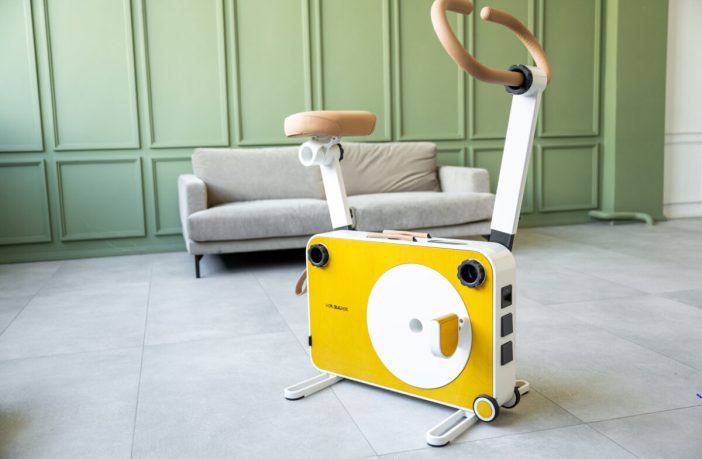- With global temperatures rising and 2023 crossing the critical 1.5 C threshold, it is evident the world needs to speed up sustainability efforts.
- While ongoing efforts are focusing on deep technology solutions to the climate crisis, there are also novel options available that can reduce energy consumption, and thus our carbon footprint, if deployed at scale.
A source of green energy
As you read this article, thousands of people are pedaling exercise bikes in gyms, health centers, and at home. Every movement of their feet creates kinetic energy that could potentially be converted to electricity and used to power phones, laptops, fridges, wi-fi routers, and other home appliances.
To harness this power, Tukas EV created the HR Bank – an exercise bike and power storage device that converts pedaling into electricity. On an HR Bank, a person can generate from 50 W per hour to 500 W/h of electricity simply by pedaling, depending on their fitness level. All the energy is stored in a 2 kWh battery that provides enough electricity to keep a light on for a week or to power a microwave oven for around 100 meals. Just 15 minutes of exercise generates enough power to charge a phone.
Devices to convert pedaling to electricity already exist but none have such a high-capacity battery. The storage device can also be charged from other types of green energy, such as solar panels or wind power, as well as by the electric grid or a car generator. At the same time that the HR Bank is being pedalled, or charged from an external source, it can power any connected device, thus generating around 4 kWh to 5 kWh of electricity every day, energy which can be used wherever needed.
Interest from business
When Tukas envisioned the HR Bank it was conceived as a device primarily oriented toward home users. We wanted families worldwide to harness their kinetic energy in a product which could be moved to a vacation home or countryside escape, or be taken on a camping trip, for use as an alternative energy storage solution. Additionally, we aimed to create a reliable source of sustainable energy.
Although the HR Bank was created primarily for domestic use, we saw a number of businesses interested in this novel way to generate and store electricity soon after the first version was launched. Sustainability-focused companies such as hotels, wellness centers, rental vacation homes, and gyms want to offer healthier, eco-friendly lifestyle options for their customers. While the HR Bank is not a professional-grade exercise bike typically found in a sports center, it meets the needs of the average user.
Untapped energy
Families, employees, and anyone else pedaling exercise bikes represent an untapped opportunity for a new energy source that could help propel humanity toward a more sustainable future. While governments subsidize solar and wind to help clean power contribute more than a third of global electricity generation by early 2025, the potential of human-generated energy is largely unexploited.
We believe pedal power, as well as other types of human-generated kinetic energy, could become an alternative source of green energy. For example, human, motion-based energy can be created in many different ways, including joint rotation, limb swings, and organ motion. In the future, as our technological capabilities advance, such energy harvesting from daily human activity, and its conversion into electricity, might replace traditional batteries and wearable electronic devices.
Similarly, as battery efficiency and capacity improve, we are committed to progressing toward a future energized by pedal power.
Author: Aurelijus Jaškulis.
About the author: Aurelijus Jaškulis is a co-founder and chief operations officer of startup Tukas EV, which created the HR Bank exercise bike and power storage device. Jaškulis is an electric vehicle enthusiast with 20 years’ management experience in third party logistics and sales.
This article was originally published in pv magazine and is republished with permission.
















